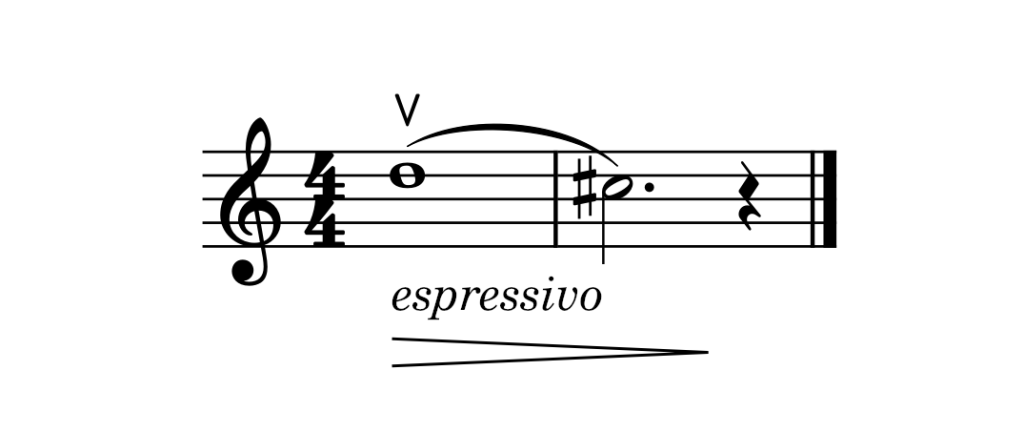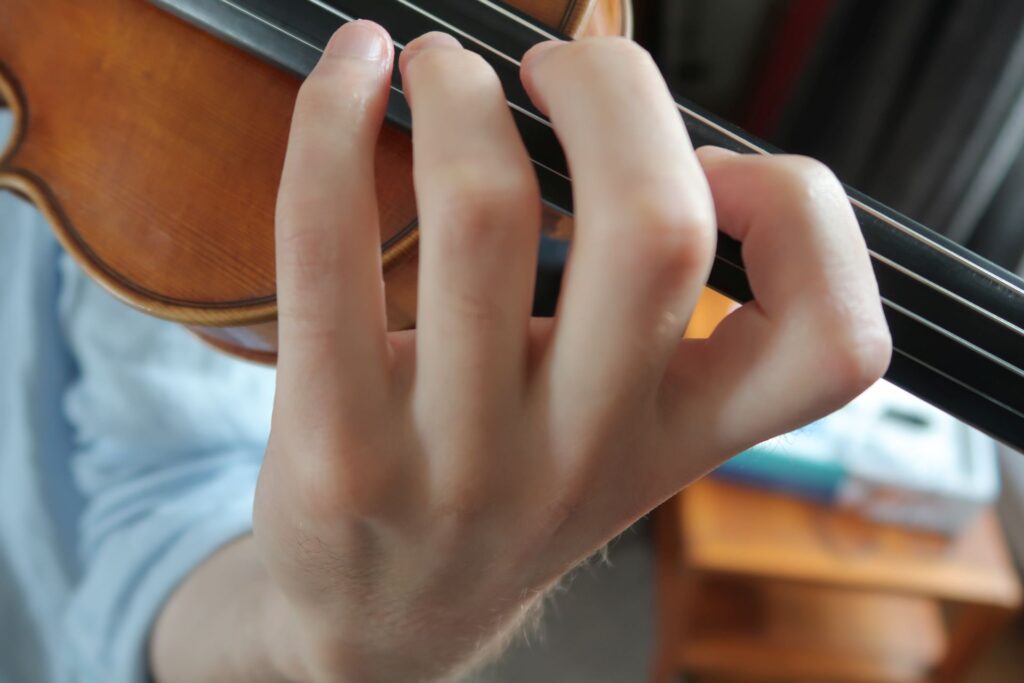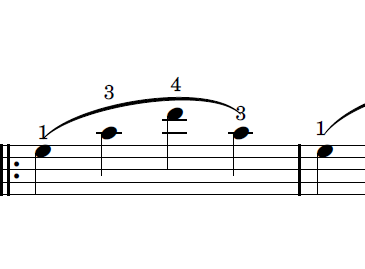Many violinists find it challenging to play an up bow in the lower part of the bow. Especially when dynamics are soft or very soft. This can be particularly tricky during slow bow strokes on long-held notes. Let’s dive into the reasons behind this discomfort and explore solutions to improve sound quality and ease of playing near the frog.
Why Up Bows Can Be Problematic
The frog is relatively heavy, adding more weight to this part of the bow. This can cause unwanted pressure on the strings, especially during slow up bows with soft dynamics. As mentioned in the previous lesson on body tension, trying to lift the weight of the bow out of the strings on up bows can lead to tightening of the trapezius muscle. This creates discomfort that can affect your bow control and sound quality.
Another reason for discomfort is that violinists often let their right elbow droop or hold it too low, leading to additional pressure on the strings. This makes it difficult to play smoothly in the lower half of the bow. For example when playing pianissimo up bows near the frog. And when trying to make beautiful bow changes at the frog.
Understanding Possible Solutions
It might help to understand the movements involved in playing an up bow. Closing the elbow is the primary motion used when playing an up bow from the tip of the bow to about two-thirds of its length (depending on the length of your arm). However, for the final third of the bow, the upper arm takes over, guiding the bow toward the frog. Each violinist must experiment to find the most comfortable way to execute this final third. But for most players, the upper arm moves slightly toward the violin. And it rotates a bit clockwise while doing that. Therefore the wrist elevates enough to ensure the weight of the lower arm doesn’t interfere with sound quality. This, of course, is especially crucial when playing in soft dynamics or during a diminuendo on an up bow. Understanding and refining these movements can greatly improve your bow control and sound quality.
Another point of awareness is to consider the role of the little finger when using the lower half of the bow. The level of engagement for the little finger varies depending on which string you are playing. When playing on the G and D strings, where the bow is held more horizontally, the little finger has a greater role in lifting the bow’s weight off the string. This is in contrast to playing on the A and E strings, where the bow’s movements tend to be more vertical, requiring less involvement from the little finger. You’ll likely feel the little finger’s pressure on the bow’s wood much more when playing on the G and D strings compared to the A and E strings. This difference in feel can guide you in adjusting your technique to ensure a smooth and balanced bow stroke.
Solutions Checklist
These tips can help you improve sound quality and reduce discomfort when playing in the lower half of the bow:
- Relax the Trapezius.
Referencing the lesson on muscle tension, direct your attention to your trapezius muscles and consciously relax them. This awareness can help you avoid unnecessary tension and allow for smoother bow strokes.
- Lightening the Elbow.
When playing up bows near the frog, think of having a “feather-light” elbow. This helps lift the bow’s weight off the string, reducing excess pressure and allowing for a softer sound. Simultaneously lift the right wrist slightly.
- Imagery Techniques
Use mental imagery to promote relaxation and proper bow control. Picture a cool breeze blowing under your right armpit to make sure your right elbow isn’t drooping. And imagine a helium balloon attached to the frog of your bow, lifting it from the string.
- Maintain the Sounding Point
As you play an up bow in the lower half of the bow, ensure the sounding point doesn’t drift toward the fingerboard. Direct your attention to the bow’s contact point with the string to maintain a consistent sounding point.
- Keep the Bow Moving
Even during diminuendos or when playing in softer dynamics, it’s important to maintain a steady bow speed. Slowing the bow too much can cause it to dig into the string, leading to scratchiness and inconsistency in sound quality. A way to maintain a consistent speed is to direct your attention to the bow’s movement. Observe the wood of the bow, and think about gently accompanying the stick on its journey toward the frog.
- Save Bow
Another effective remedy for achieving a better sound on an up bow in the lower half of the bow is to “save” bow at the beginning of the bow stroke. This ensures that you have enough bow left for the end of the note, allowing for a controlled and even sound throughout the entire bow stroke. While this might seem like an obvious solution, it’s a powerful one that can make a significant difference in your sound quality.
Think of it like breath support for a singer. A singer wouldn’t want to run out of air before the end of a phrase; similarly, as a violinist, you don’t want to run out of bow before completing a long note. By conserving bow at the start, you can maintain the right amount of bow pressure and speed, which is essential for achieving a clean and smooth sound.
Exercise
Play this exercise with the metronome at different speeds. Change the notes and practice on all four strings. Play double stops, as well.

Putting It All Together
With these strategies, you can improve your sound quality when playing up bows in the lower half of the bow, especially in soft or very soft dynamics and during slow, sustained notes. Incorporate these solutions into your practice sessions to ensure a more relaxed and comfortable playing experience.


